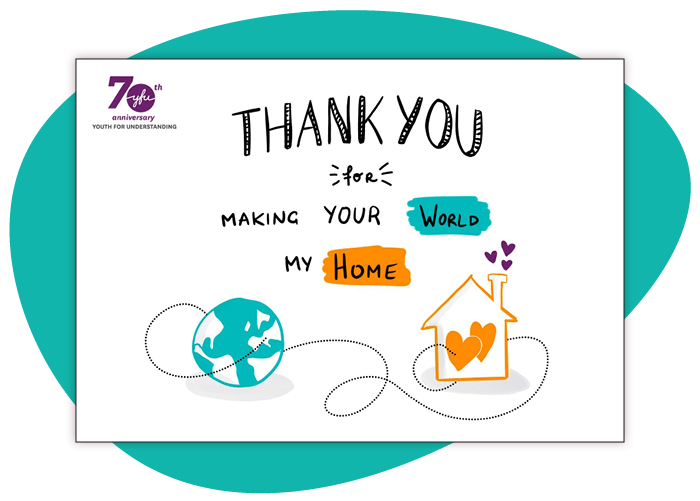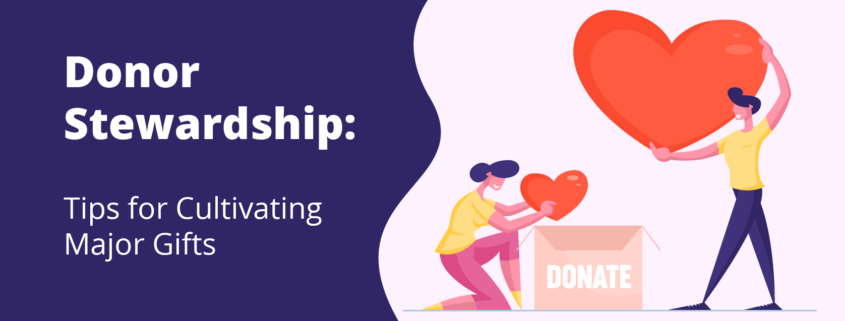Donor Stewardship: Tips for Cultivating Major Gifts
When it comes to fundraising and marketing, your nonprofit needs to maximize its revenue in order to fund its important work. Aside from inspiring donors to give more, you must cultivate deeper relationships with them to show your appreciation and strengthen the community surrounding your organization.
Donor stewardship allows you to do both! In this guide, we’ll explore how you can cultivate major gifts through effective stewardship by covering the following topics:
- What is donor stewardship?
- How to steward donors
- Donor stewardship tools
Donor stewardship is not just a fundraising strategy, but an important part of building the community that defines your nonprofit. That’s why you’ll need a thorough understanding of stewardship before you can develop a plan of action.
What is donor stewardship?
Donor stewardship is the process of building relationships with donors after they make a gift to your nonprofit. By strengthening these relationships, you’ll help donors feel a sense of loyalty to your organization, increasing the likelihood that they’ll give again—and sometimes in larger quantities!
Effective donor stewardship can help your nonprofit in many ways, but it also benefits the donor. Building a relationship with donors and encouraging a response initiates reciprocal communication, through which both your organization and your donor benefit from stewardship.
How to steward donors
Understanding the benefits of donor stewardship should incline you to take action. Use the following stewardship strategies to start cultivating major gifts.
1. Thank the donor for their gift.
Not only should you thank donors for their contributions, but you must thank them as quickly as you can. As a result, supporters will associate giving with the positive feeling of being appreciated, and this sets the foundation of your stewardship campaign. Once a donor feels recognized the moment they contribute time, money, or other resources to your nonprofit, you’re poised to continue this stewardship.
Here are a few effective channels you can use to recognize your donors:
- Email: CharityEngine’s nonprofit donations guide recommends leaning on email as the foundation of your fundraising strategy, and that includes following up with thank-you emails!
- Events: Donor appreciation events are like a grand gesture of gratitude and can double as stewardship opportunities when you offer additional ways to give at the event.
- eCards: Make thank-you messages fun with exciting animations and branded designs on digital greeting cards. For example, Youth for Understanding (YFU) created the following digital card to celebrate its 70th anniversary and express gratitude for those who have donated.

Timely appreciation and personalized outreach are the key to donor stewardship. The more you can learn about your donors, the easier it is to develop genuine relationships with them and encourage greater giving. For example, understanding why a donor gives to your organization can provide valuable insights that will help your stewardship efforts.
2. Research and segment your donors.
To send messages and plan stewardship activities that resonate with donors, you’ll first need an understanding of their ability and motivation to give. Research your supporters and append any existing data to gain a comprehensive view of their involvement with your organization. Some key questions to ask include:
- Where do they live? Local supporters may be available for in-person stewardship activities, such as volunteer opportunities, facility tours, or a luncheon with your board members. Supporters who live farther away may be more responsive to virtual events or consistent communications.
- Why do they donate? Knowing why a donor gives can indicate what would motivate them to increase that gift. For example, if they donate in honor of a loved one, you might ask them to make a larger tribute gift on special days.
- What is the frequency of their giving? Recurring donors may be promising candidates for major gifts. In addition to pursuing them as major donors, guide other supporters through the giving levels by asking one-time donors for another gift and occasional donors for a monthly commitment.
- What are their communication preferences? Donors are more likely to increase their gift size when you ask through the communication channels they frequently use. For example, send an email newsletter about the importance of major gifts to the group that prefers to receive messages this way.
This information can be used in your marketing efforts, too, when creating social media posts or crafting email newsletters. For example, you may learn that your college-aged donors tend to use Instagram daily. If these individuals are young, unemployed college students, they may be more receptive to a crowdfunding campaign rather than major giving.
3. Create a stewardship matrix.
Equipped with information about your donors, you’re ready to create a specific plan for donor stewardship. Double the Donation’s donor stewardship guide recommends organizing this information in a stewardship matrix, which is an outline of the method and cadence your nonprofit will use when reaching out to donors.
Following this matrix ensures that you’re engaging your supporters throughout the donor journey. Consistent communication will keep your nonprofit at the top of a supporter’s mind and keep your mission relevant when it’s time to choose where to give.
Donor stewardship tools
Now that you have a donor stewardship plan, you’re likely ready to jump in and start fundraising! However, you’ll need the right tools to execute this plan and ensure your fundraising succeeds.
Look for nonprofit fundraising software that offers the following features to ensure it aligns with your approach to stewardship:
- Major gifts features help you identify opportunities and track their progress.
- Email automation will make it easy to communicate regularly with donors.
- Robust reporting and analytics will help you segment your donors according to any filters you want.
- Optimized online forms can help increase conversions.
Your stewardship efforts are more valuable when you have technology that records and tracks all engagement with your nonprofit. With a close view of your donors and their activities, you can quickly discern whether or not your stewardship efforts are working. If not, you’ll have the data to see where you’re falling short, and you can quickly pivot to keep those donors engaged.


